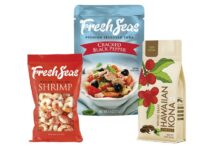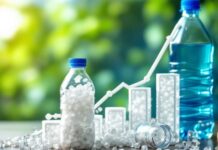Before we begin, the predictions for 2023 that were prevalent in the industry, such as
- Reverse material substitutions from plastic to paper are going to surge.
- Compostable packaging is going to lose some of its cache.
- Europe will continue riding and leading the anti-greenwashing wave.
- Secondary packaging is going to be a new pressure point.
All of them came true.
Let us now move on to what we have in store.
1- Ditto 2023 trends
All of what was predicted for 2023 is going to continue in 2024.
This should not come as a surprise, but it is indeed important to take into account that these are merely one-time blips when it comes to the sustainable packaging radar.
For instance, if one looks at the latest corrugated Amazon packaging, it states that Our Boxes Use Less Material and invites one to learn more by way of a Quick Response- QR code. This is indeed the holy grail when it comes to sustainable corrugated or secondary packaging, as one can go on to ship the same amount of goods with a prominent reduction in terms of total weight, positively affecting the cost of cartons, transportation costs, fuel use, and, of course, greenhouse gas generation.
There is one more example of this. As per the latest round of the Packaging and Packaging Waste Directive- PPWD as described by the European Parliament in March last year, there are calls for 70% of all waste to be recycled by the end of this decade, with the rate of plastics recycling getting doubled to 55% since 2008. There also happen to be source reduction provisions that may very well reduce or even eradicate primary packaging cartons like toothpaste boxes.
Moreover, more than half a dozen global converters as well as consumer packaged goods companies- CPGs go on to indicate that their objective is not compostability, as it does not happen to be circular and not in play widely. Their focus is going to be and will be on recycling.
2- California happens to have more eco-clout than federal agencies
It is well to be noted that the state of California is making both the Environmental Protection Agency- EPA as well as Federal Trade Commission- FTC irrelevant.
Notably, on October 7, 2023, Governor Newsom inked Senate Bill (SB) 253, which happens to be a law that requires companies that function in California and also generate more than $1 billion in yearly revenues to go on to disclose their direct as well as indirect emissions. On the same day, he also signed SB 261, which needs companies with yearly revenues of a minimum of $500 million to disclose data with regards to their climate risk management.
This happened to be on top of the June 30 signing of the Plastic Pollution Prevention and Packaging Producer Responsibility Act (SB 54), which goes on to shift plastic pollution ownership in California from consumers to producers. Apparently, the Extended Producer Responsibility- EPR law’s aim happens to be a 25% decrease when it comes to single-use plastic packaging that is used in the state by 2032.
The President of Atlantic Packaging, based in Wilmington, NC, Wes Carter, happens to serve on the 13-person Advisory Board, which is going to help CalRecycle execute SB 54. He was recently asked as to how the law is going to execute the packaging sector, to which he commented that, at the end of the day, SB 54 happens to be a catalyst when it comes to activating a greater level of partnership between the consumer products packaging supply chain, recyclers as well as waste haulers, state and local governments, and of course individual citizens. It is indeed a call to action. Intelligent EPR can go on to be the framework for how one can go on to create a sustainable revolution across the world and stem the tide when it comes to packaging pollution.
October 7, 2023, also happened to be the day that Newsom went on to ink the Assembly Bill (AB)-1305, which happens to be a Voluntary Carbon Market Disclosures Act- VCMDA which is intended to take care of greenwashing by having to require a detailed disclosure when it comes to the methodology for tracking as well as verifying claims in terms of net zero, carbon neutrality, or even emissions reductions, along with the disclosure in terms of voluntary carbon offsets- VCOs bought, made use of, marketed, or even sold within the state.
One can go on to avoid these laws by not doing any business in California or by making sure that no one in California is a witness to the company’s marketing, advertising, or sales texts, which includes social media.
3- A new definition when it comes to source reduction
The source reduction, ironically, is now being defined as a strategy to promote decreased plastic use rather than simply decreased material usage.
Change a lightweight plastic package with a heavier paper one. It is well to be noted that many times in the last 30 years, this has not happened to be a scientifically valid approach in order to reduce solid waste or greenhouse gas generation. The kind of irony in this is that plastic packaging was able to get through the packaging markets due to the fact that it was the most source-reduced material. Today, the tables are indeed turning in the sense that consumers are being led to have the thought that eradicating plastic happens to be the best way in order to source reduce packaging.
Apparently, the most sustainable package happens to be the one that goes on to provide maximum product value but with a minimum of economic, environmental, as well as social waste. One cannot afford to eliminate the key materials from the sustainability toolboxes just to satisfy the non-scientific posturing of specific political groups as well as non-governmental organizations- NGOs.
4- Focus on packaging barriers and also adhesives
Barriers as well as adhesives happen to be taking on more strategic roles when it comes to the sustainable packaging spectrum.
The idea here is to go for a replacement of fossil fuel-based and/or non-recyclable materials that lessen or even contaminate packaging recovery streams. This situation is enabling companies to promote the oil- as well as grease-resistant properties of starch-based coatings that are plant-based, recyclable, as well as compostable.
It is well to be noted that, besides starch, back to the future coatings can go on to contain cellulose or lignin, all of which happen to be plant-based. Polyhydroxyalkanoate- PHA is a bio-resin that is also in the mix but is at present too expensive to be considered for broad-scale usage.
5- Decisions opt for cost more than science
The want for science-based, sustainable packaging decisions looks to be declining, as the perceived requirement when it comes to the packaging cost control rises.
There are at least two large global CPGs that happen to be having their packaging functions report to their purchasing departments.
This kind of reorganization goes on to mean that the marketing department looks to bend to generally uninformed consumer demands as well as perceptions, and hence will decrease or even cut completely the science-based decision-making.
In the long term, this is going to lead to greater scrutiny by NGOs as well as regulators and continue with trend #2, in which the states in the US like California, Vermont, Oregon, New York, Washington, and Colorado happen to come into the science-based decision-making void.
However, the numerous political dispositions in every state are going to create a confusing patchwork of guidelines, laws, as well as regulations.
The fact is that in the grand scheme of what requires to be done to build sustainable societies, packaging happens to have a much smaller role to play than decreasing the dependence on fossil fuel-based energy sources as well as increasing energy efficiency at work, home, as well as play. This, however, does not give the sector a free card to play, specifically when it comes to pollution, marine debris, and the chemicals of concern.



























